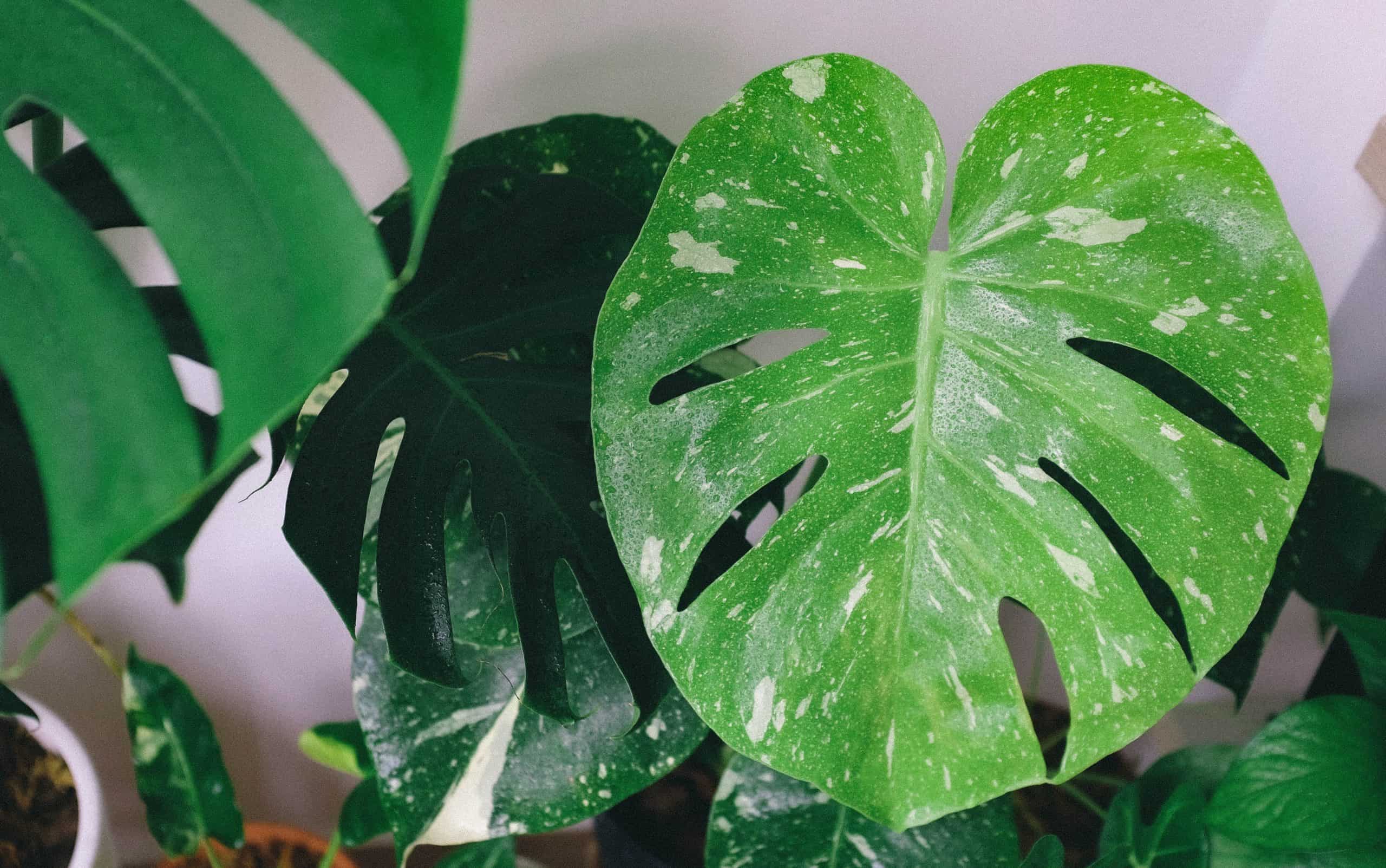When you think “monstera”, you probably think of those large, beautiful, fenestrated leaves, right? The beautiful monstera leaf is iconic and the reason why these plants are becoming so popular as houseplants. That’s why monstera leaf care is so important!
We want our monstera leaves to look good, but sometimes caring for them is a challenge. If the plant experiences any kind of health problem or is unhappy with its environment in any way, the first thing you’ll notice is a change in the leaves.
Leaves might turn yellow, develop brown spots, droop, or refuse to develop those holes and slots that make these leaves so striking.
Luckily, there are some tricks to caring for monstera leaves so your plant can look like the beautiful, healthy monsteras you can’t stop liking on Instagram!
Table of Contents
Our Top Tips for Monstera Leaf Care
Give your monstera plenty of bright, indirect sunlight
One of the biggest frustrations I hear from monstera owners is that the leaves won’t split! After all, what’s a monstera without the characteristic splits and holes?
The best thing you can do to encourage your monstera leaves to fenestrate is to put it near a bright window, but not directly in the sun’s rays. (This also prevents scorching, which can cause leaf discoloration.) An east facing window works really well for this.
If your home is dark and you can’t provide enough natural sunlight, you can supplement with a grow light (we like this one). With sufficient light, your monstera can create the energy it needs to support large, green, fenestrated leaves.
Fertilizer
Like all plants, monsteras need nutrients. They create their energy from sunlight, but they also need the right balance of minerals to be healthy.
Think about it: if you just ate donuts and didn’t get any actual vitamins or minerals, you wouldn’t look or feel healthy either! Your hair and skin would look dull, and your nails would be brittle.
It’s the same with plants.
Think of fertilizer as a multivitamin for your monstera. Fertilizer provides the nutrients necessary for your monstera to grow new, large, deep green leaves. Without the proper nutrients, you might notice a lack of growth, small leaves, or even leaf discoloration like yellowing.
Our Monstera Plant Food is formulated specifically for monsteras and contains the precise ratio of nutrients monsteras need to support healthy growth. It’s also super easy to use and is designed to be added to your regular watering routine. That way, you won’t have to remember a fertilizing schedule!
Learn more about Monstera Plant Food here.
Dial in your watering routine
The biggest thing that can wreck your monstera’s leaves is over or underwatering.
Over watering can lead to ugly dark brown spots on your leaves, and underwatering can cause light brown spots and dry, crispy leaves.
The worst part is, those leaves will not heal from those spots. Once spots develop, the leaves are damaged forever. The only way to get rid of them is to prune the leaves or let your plant drop them on its own.
Read our guide on watering your monstera to keep your leaves healthy.
It’s also important to act as soon as you notice those spots. If you see signs of root rot, read our guide on treating root rot. You may also want to try our Root Rot Treatment to halt the infection and help your plant’s roots heal.
A moisture meter can also help you figure out whether your monstera needs water.
Do routine pest inspections
Another threat that can wreak havoc on your monsteras leaves is pests.
Monsteras are susceptible to household pests like mealybugs, spider mites, scale, thrips, aphids, and fungus gnats. So when you water your monstera, do a thorough inspection of the tops and bottoms of the leaves as well as the stems and surface of the soil.
If you notice insects (they may be tiny, like little dots), webbing or cottony material, or clear sticky goo, you might have a pest problem.
Read our guide on treating monstera insect problems here.
This is also a good reason to avoid overwatering and make sure your monstera gets enough light, because many insects are attracted to dark, damp conditions.
Also, make sure to carefully inspect any new plants you bring home for insects, because pests can spread from plant to plant!
Clean your leaves regularly
Leaves can get dusty, so make sure to dust your monstera’s leaves at least every week and give them a gentle wipe-down with a mixture of lukewarm water and gentle dish soap every month or so.
That way, dust won’t clog your plant’s pores and interfere with respiration or photosynthesis. (You don’t want that, because your plant will essentially starve AND suffocate.)
Provide humidity
Monsteras are tropical plants, so they LOVE humidity.
Without proper humidity, monstera leaves can develop dry spots, become flimsy, or even crack!
If your home is very dry, your monstera might enjoy a humidifier, pebble tray, or to be near other plants so that their respiration can raise the relative humidity.
Note: To set up a pebble tray, simply fill a shallow tray with pebbles and water and sit your monstera on top, planter and all. As the water evaporates, it will create some upward humidity for your plant.
Protect your leaves with Leaf Armor
A great way to protect your leaves against a number of threats like pests, dry air, dust, bacteria, fungus, and other threats is Leaf Armor. It also keeps your leaves clean and shiny!
Leaf Armor is gentle and safe to use on monsteras as well as your other houseplants, so you can protect ALL your plant babies with the same product!

You can purchase Leaf Armor here.
Monstera’s leaves are its crowning glory, and you can keep them looking healthy and gorgeous with good care and a few targeted products!





